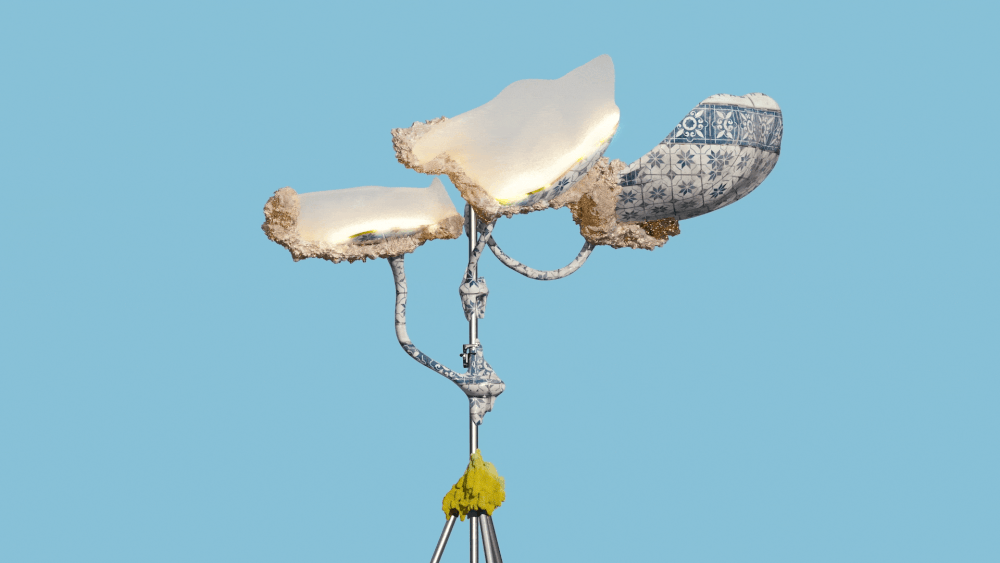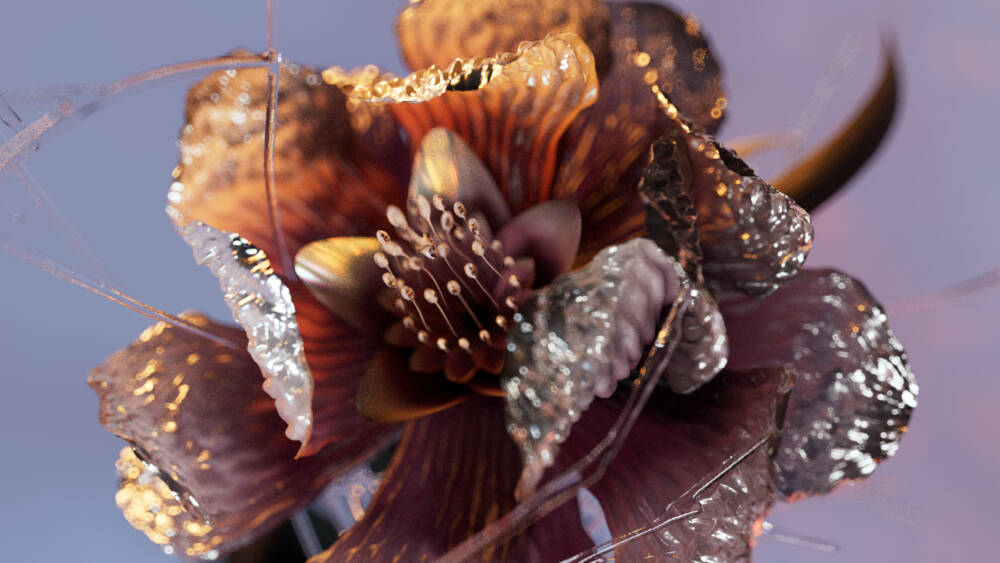INSIDE THE MINDS BEHIND BUS.GROUP: A JOURNEY OF INNOVATION AND CREATIVITY IN DIGITAL ART
Join us as we explore the creative minds behind bus.group. Founders Daniel Schnitterbaum and Manuel Birbacher share their journey, the inspirations that fueled their careers, and their innovative approach to the future of digital art.
First of all, for those who don’t know bus.group: Can you describe bus.group in a few words? Also, feel free to also introduce yourself!
bus.group is a Berlin-based creative studio, focusing on 3D visualization and contemporary visual content. We’re Manuel Birnbacher and Daniel Schnitterbaum, co-founders of the studio together with a talented team of ten including CGI artists, managers, producers, directors and editors.

How and when did you realise that you wanted to work in this creative field?
Manuel’s fascination for CGI was triggered at a young age through video games and the urge to change in-game visuals. Daniel always had a fascination for product and still life photography. Our journey eventually led both of us into graphic and editorial design then evolved into art direction. By now we work mostly as directors or managers. Each step was a layer added to our foundation and felt like a natural progression.
What inspired you to found bus.group?
Our decision to found bus.group was driven by our shared passion for graphic design and image making, and our early successes with prominent clients in the fashion industry and cultural sectors. In 2017 we initially created a setup that would allow us to pursue all our interests collectively and sell a wholesome product: the concept, the graphic design and the images.
Our early projects included creating animations for Balenciaga’s social media, designing an indie magazine called ‘This is Badland’, and developing the visual identity for some of Berlin’s top restaurants.
Over time, our interests evolved deeper towards exploring new technologies within CGI and film. Leveraging our strong design background, we fully transitioned into being a creative CGI studio about three years ago. This helped us channel all our creative energy towards one direction. Today, our team has grown to 10 members, but it’s not just about size. It’s about the combined force of creative minds working together and following their curiosities.

What does a day at bus.group look like? What does your day-to-day work look like?
Every day is a new challenge. We typically start with a huddle to discuss specific projects, then dive into our respective areas of focus, whether that’s conceptualizing new ideas, refining current projects or improving our business workflows.
What has been your favourite collaboration so far? What has made it better than others?
One standout project was our invitation two years ago to create the in store visuals for Maybach’s flagship store, the Maybach Atelier, in Shanghai. Tasked with artistically interpreting Maybach’s core values and materials, we crafted a dreamlike landscape featuring fantastical natural events — hills, alien-like mushrooms, and rivers crafted to symbolize the luxury brand. This project challenged us creatively and technically, as we needed to adapt our visual metaphors to be displayed on several large 6K screens that operate continuously all day.
Our collaborations with high-profile clients like Balenciaga, Cartier, Lancôme, Max Mara, Mercedes and Rimowa stand out because they challenge us to push the boundaries of what’s possible in digital art and luxury product visualization. Each of these brands has a rich heritage and caters to a discerning luxury market, yet they all look for innovative ways to present themselves. This aligns with our mission to break conventional aesthetics and develop compelling visual narratives while respecting the brands identity.
We also deeply value our projects with music festivals, type designers, or museums. Often, these smaller, daring projects allow us to explore creative freedom of our artistic expression in unique and fulfilling ways.
I’ve just seen a version of the title clip for the Forward Festival. How did you come up with the creative idea for the title clip?
The inspiration for the title sequence came from the concept of camping — specifically, the intriguing idea of being isolated and protected by merely a thin layer of cloth in wild nature. This sparked the initial vision of creating a stylized desert environment akin to a fever dream.
The intimidating desert serves as a background to explore changing perspectives and openness to new ideas. Within this barren world, we aimed to reveal hidden beauty and inventive solutions. Visual elements like windmills sketching geometric patterns in the sky, birds glowing in surreal colors under the sun, and scenes showcasing infrared aesthetics highlight this theme. We even added a whimsical touch with scenes like burning flowers and a creative depiction of fixing a car wheel.
The overall aesthetic drew influence from Alex Proyas’s 1989 film, Spirits of the Air, Gremlins of the Clouds, which helped guide our color palette and scene build. Honoring our graphic design roots, we incorporated bold graphic titles using a custom font developed from Dinamo’s Oracle, which helped anchor the sequence’s visual style.
What programmes did you use to create the video?
We used a massive Miro board for brainstorming, collecting moods and styleframes. To create the scenes we used a combination of Cinema 4D, Houdini and Redshift. After some compositing in Nuke we brought everything together in After Effects.

How do you incorporate AI into your work?
AI is a tool that, when used wisely, can enhance our creativity. We incorporate AI in various stages of our workflow, from testing initial ideas and to optimizing final renderings.
How do you think AI will develop in the future and are you looking forward to this development?
AI is evolving rapidly, and we’re excited about its potential to further enhance the creative process on a technical level. We anticipate more intuitive tools to speed up workflows. On a creative level we are relying on our own intelligence though 🙂
How does bus.group plan to expand or develop its services in the coming years? Are there any new projects or collaborations on the horizon that you can share with us?
As hardware and software continue to advance, becoming both more powerful and accessible, and as AI systems further their understanding through centuries of image-making, achieving ultra-realistic and pixel-perfect CGI work is poised to become an industry standard. Looking to the future, our focus is on observing and testing these technological advancements to enhance our capabilities as a creative studio. While it might be aspirational for traditional post production houses to produce ultra realistic pixel perfect work, we want to look beyond traditional visual standards and further innovate in the space where creativity meets technology. Our goal is to develop new conceptual and aesthetic solutions, and not generic ones. We are particularly excited about the possibilities also within real-time environments, which represent significant areas of interest for us moving forward.
What advice would you give to aspiring artists/designers who want to work in CGI, creative direction, and image making?
The field is constantly evolving, so being adaptable and open to new ideas is crucial. While technology is a powerful tool, your creativity is the real driver of innovation.

Join us for an insightful session with Bus.group at Forward Festival 2024 in Amsterdam & Berlin. Get more information here.
Image Credits: © Bus.group, 2024